
Omer Fast’s Nostalgia III, 2009 – production still super 16mm film transferred to HD video running time: 32:48 minutes via Whitney Museum of American Art
Now on view at Postmasters Gallery and Whitney Museum of American Art are concurrent exhibitions by the iconoclastic video artist Omer Fast, known for his non-sequential cut ups of tragedy and humanity. Splicing disjunctive narratives of traumatized subjects – actual, staged or imitated – Fast’s dystopian imaginings shun aesthetic formality and evoke what truth lies in the ambiguity of storytelling. As highly interpretive mash ups collapsing space and time, his films recall the intimacy of reality and fantasy through mingling documentary and fictional styles.
Chronicling the plight of the refugee, Omer Fast’s Nostalgia, showing at Whitney Museum of American Art, pinpoints feelings of longing and dislocation in a labyrinthian network of disparate ethnic voices. Tracing themes of displacement, war and loss through the recurrent motif of an animal trap, jumbled bits of dialogue and streams of overlaid images, Fast explores different permutations of cross-cultural encounters.
More images, text and related links after the jump…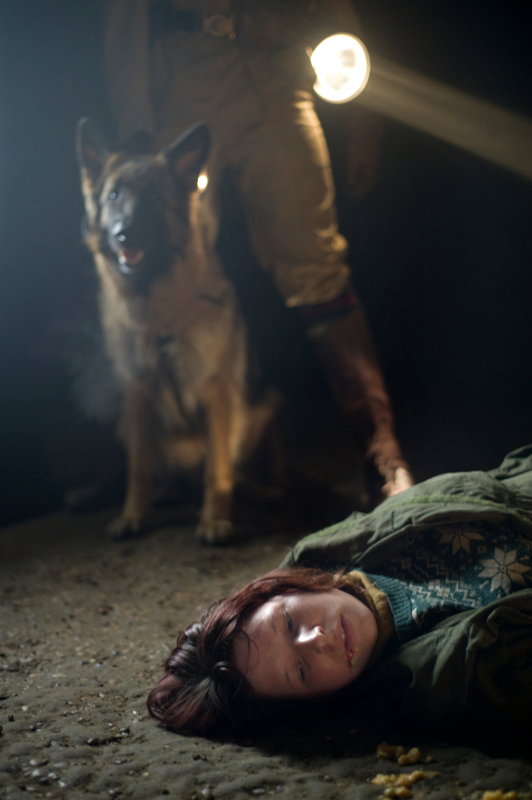
Omer Fast’s Nostalgia III, 2009 – production still super 16mm film transferred to HD video running time: 32:48 minutes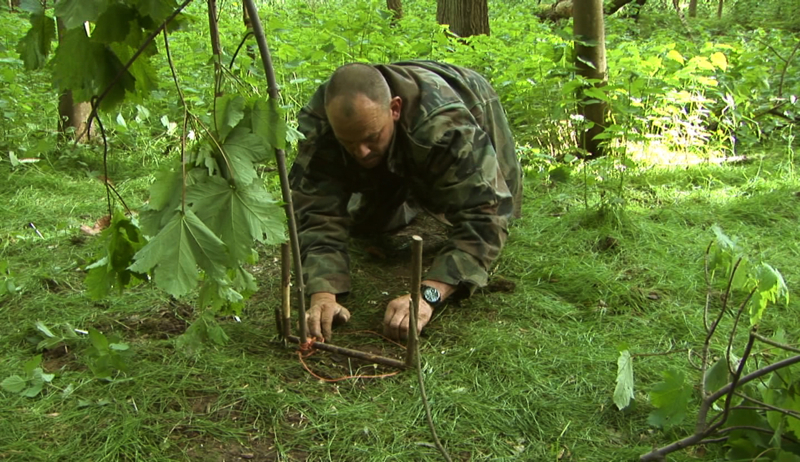
Omer Fast’s Nostalgia I, 2009 – production still super 16mm film transferred to HD video running time: 32:48 minutes
The first of three installments, the nebulous Nostalgia I, features a British gamekeeper building an animal trap from twigs and twine according to audio instructions from a Nigerian man. As the writer, director and editor of his films, Fast employs highly technical camerawork and editing to add to the psychological tension and overall enigmatic tone of the piece.

Omer Fast’s Nostalgia II, 2009 – production still super 16mm film transferred to HD video running time: 32:48 minutes
In Nostalgia II, Fast probes the fraught encounter between strangers of different nationalities. Examining racial relations through the tense exchange between a Nigerian ex child soldier and an Englishman to whom the African entreats asylum, Fast uses special effects to produce a critique of our quite arbitrary modern interview politics, reflecting the complications inherent in broadcast journalism. Viewers are invited to watch as the Nigerian inspires horror from his interviewer, after confessing to trapping and eating monkeys, and effectively dashing any hope at asylum. Although it would seem that Fast is interested in implicating the media through this seemingly ruthless critique, as an interviewer and collaborator in the process, he is more interested in the storytelling aspect and re-framing of narratives.

Omer Fast’s Nostalgia III, 2009 – production still super 16mm film transferred to HD video running time: 32:48 minutes
Further exploiting issues race and terror, Nostalgia III completes Fast’s three part film series at Whitney Museum of American Art through a vertiginous succession of human altercations. In Nostalgia III, the artist subverts the notion of the persecuted minority, featuring three English refugees denied at the border and threatened with torture in an affluent, unnamed African democracy.
Take A Deep Breath, screening at Postmasters Gallery, takes the artist’s fascination with dread a step further, forcing the viewer to endure shocking and violent plot twists. Set at the scene of a bombing, the film first exposes the viewer to the macabre remains of the ruins’ sole survivor. But even after the victim’s identity as suicide bomber is unearthed, we are instantly projected to the scene of a degenerate soap opera, whose cast and crew immediately spiral into petty bickering. These absurd shifts from tragedy to comedy are what gives Take A Deep Breath its nightmarish tint and defines Fast’s cynical, shrewd mode of film making. When the film could gruesomely transmogrify into a moral fable, Fast resists all pathos or didactic romanticism.
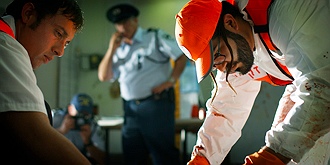
Omer Fast’s Take a Deep Breath, 2008 – production still two channel HD video running time: 27:07 minutes
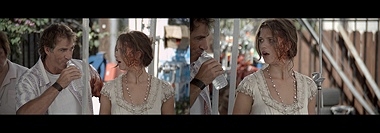
Omer Fast’s Take a Deep Breath, 2008 – production still two channel HD video running time: 27:07 minutes
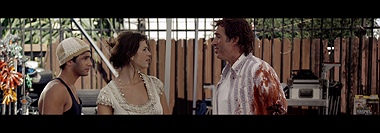
Omer Fast’s Take a Deep Breath, 2008 – production still two channel HD video running time: 27:07 minutes
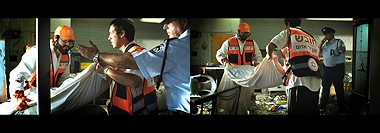
Omer Fast’s Take a Deep Breath, 2008 – production still two channel HD video running time: 27:07 minutes
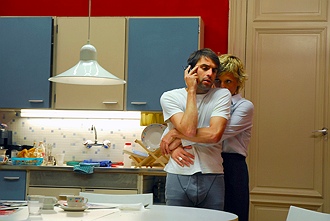
Omer Fast’s De Grote Boodschap, 2007 – production still single channel HD video running time: 27 minutes
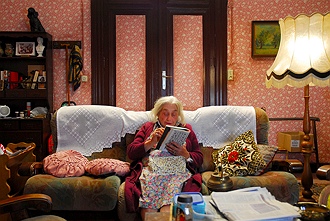
Omer Fast’s De Grote Boodschap, 2007 – production still running time: 27 minutes
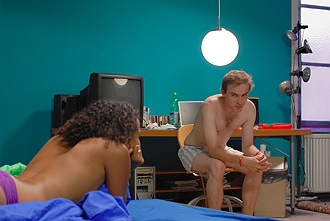
Omer Fast’s De Grote Boodschap, 2007 – production still single channel HD video running time: 27 minutes
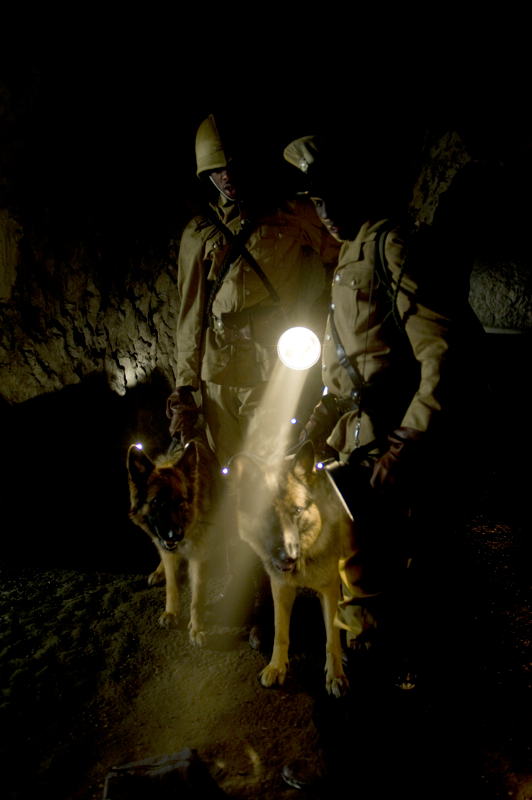
Omer Fast’s Nostalgia III, 2009 – production still super 16mm film transferred to HD video running time: 32:48 minutes
A native of Israel, Omer Fast was raised in New York but currently resides in Berlin. As the recipient of the Bucksbaum Award for his 2007 piece Casting, Fast won $100,000 and a one-man show, which he now implements in the respective Nostalgia and Postmasters exhibition. Since graduating from Hunter College with an MFA in 2000, Fast has accomplished international acclaim, showcasing his films at prestigious cultural institutions, including the Centre Pompidou in Paris and the National galerie in Berlin, which this year awarded him its Prize for Young Art.
All images via Postmasters Gallery unless otherwise noted.
via: artobserved.






No comments:
Post a Comment